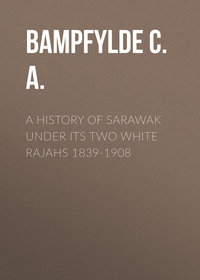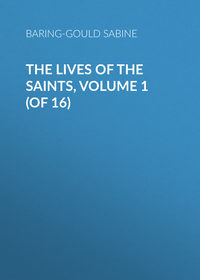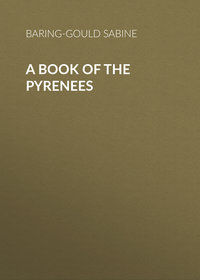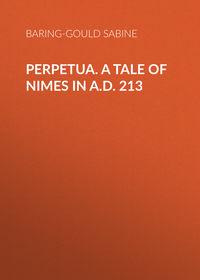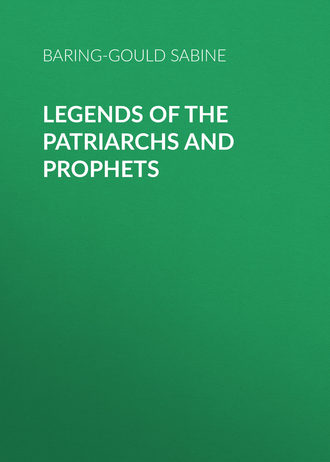 полная версия
полная версияLegends of the Patriarchs and Prophets
Buttmann, Ueber der Mythus d. Sûndfluth, Berlin, 1819; Lûken Die Traditionen des Menschengeschlechts, Munster, 1856; Bryant, Of the Deluge in Ancient Mythology, London, 1775, etc.
206
Parrot, Journey to Ararat, English Trans. Lond. 1845.
207
Joseph. Antiq., i. 3; see also Ptolem. Geogr. vi. 2.
208
Joseph. Antiq., i. 4.
209
Euseb. Præp. Evang. ix. 19.
210
Lucian, De Dea Syra, c. 12, 13.
211
Georg. Syncellus, Chronographia, p. 29, B., ed. Bonn; or Cory’s Ancient Fragments, p. 26 et seq.
212
Præp. Evang. ix. 12; see also S. Cyril contra Julian, i.
213
Bochart, Geogr. Sacra, p. 231.
214
Ekhel, Doctrina Numm. Vet. iii. p. 132 et seq.; see also Bryant’s New System of Ancient Mythology, Lond. 1775, i. note 3.
215
Orac. Sibvll, i. v. 260, 265-7. Ed. Fiedlieb.
216
Bundehesch, 7.
217
On the Chronology of the Hindus, by Sir W. Jones; Asiatic Researches, ii. pp. 116-7.
218
Bopp, Die Sündfluth; Berlin, 1829, p. 9.
219
Ovid. Metam. i. 240 et seq.
220
Steph. Bryzant., s. voce Ικονιον.
221
Diod. Sicul. lib. i.
222
Mém. concernant les Chinois, i. p. 157.
223
Klaproth, Inschrift, des Yu; Halle, 1811, p. 29.
224
Mém. concernant les Chinois, ix. p. 383.
225
Mart. Martinii, Hist. Sin. p. 26.
226
Steller, Beschreibung v. Kamschatka; Frankf. 1744, p. 273.
227
Serres, Kosmoganie des Moses, übersetzt von F. X. Stech, p. 149.
228
Davies, Mythology of the British Druids, London, 1809; and Celtic Researches, London, 1844: curious works on the Arkite worship and art-ditions of the Kelts.
229
The prose Edda; Mallet, Northern Antiq., ed. Bohn, p. 404.
230
Grimm, Deutsche Mythol.; Göttingen, 1854, p. 545.
231
The same story precisely, is told by the closely allied race of the Chippewas; Atherne Jones, Traditions of the North American Indians, London, 1830, ii. p. 9 et seq.
232
Lütke, Voyage autour du Monde, i. p. 189.
233
Braunschweig, Die alten Amerik. Denkmäler; Berlin, 1840, p. 18.
234
Atherne Jones, Traditions of the North American Indians, ii. 21-33.
235
Catlin, Letters and Notes on the Manners, etc., of the N. American Indians; London, 1841.
236
Mayer, Mytholog. Taschenbuch; Weimar, 1811, p. 245.
237
Schoolcraft, Notes on the Iroquois; New York, 1847, p. 358.
238
Müller, Geschichte des Amerikanischen Urreligionem, Basle, 1855, p. 515; Lüken, Die Traditionem des Menschengeschlechts, p. 223.
239
Humboldt, Anh. des Cordilleren, i. p. 42.
240
Antonio de Herrera, Hist. general de los Hecos, etc.; Madrid, 1601, iii. c. 10.
241
Compare Lüken and Müller.
242
Humboldt, Reise in die Aequinoctial Gegenden, iii. pp. 406-7.
243
Nachrichten aus dem Lande Guiana, v. Salvator Gili; Hamb. 1785 pp. 440-1, quoted by Lüken.
244
Garcilasso de la Vega, Hist. des Yncas; Amst., i. pp. 73 and 326.
245
Ausland, Jan. 1845, No. 1.
246
Jalkut, Genesis, fol. 16 a.
247
Colin de Plancy, p. 121.
248
Tabari, i. c. xli.
249
Hist. Dynastiarum, ed. Pocock; Oxon., 1663, p. 9.
250
Hist. Dynastiarum, ed. Pocock; Oxon., 1663, p. 10.
251
Eutychius, Patr. Alex., Annal., t. i. p. 44.
252
Bereschith Rabba, fol. 22, col. 4.
253
Eutych. Annal., ed. Selden, i. p. 35.
254
Suidas, Lexic. s. v. Σίβυλλα.
255
Tract. Sanhedrin, fol. 108, col. 2.
256
Tabari, i. p. 115.
257
Colin de Plancy, p. 224.
258
Eisenmenger, i. pp. 318-9.
259
Ibid., p. 376.
260
Ibid., p. 395.
261
Adv. Hæres., lib. i.
262
De Tartaris, c. 9.
263
Reliquiæ Arcæ Noæ, in Fabricius, i. art. 33.
264
Tabari, i. c. xlii. xliii.
265
Tabari, i. c. xliii.
266
Gen. xi. 16, 18, 20, 22.
267
Abulfaraj, Hist. Dynastiarum, p. 12.
268
Abulfaraj, Hist. Dynastiarum, p. 13.
269
Gen. x. 21-24.
270
Koran, Sura xi. verse 57.
271
Tabari, i. c. xliv.; Abulfeda, Hist. Ante Islamica, pp. 19-21.
272
Weil, pp. 47, 48.
273
Herbelot, Biblioth. Orientale, s. v. Lokman.
274
Tabari, i. p. 432.
275
Koran, Sura xxvi. v. 153.
276
Ibid., xi. v. 67.
277
Tabari, i. c. xlv.
278
Weil, pp. 48-61; Abulfeda, p. 21.
279
Pirke of Rabbi Eliezer, c. xi.
280
Ibid., c. xxiv.
281
Ibid., c. xi.
282
Targums, ed. Etheridge, i. p. 187.
283
Bechaji, Comm. in 1 Mos. xi.; Pirke of R. Eliezer, c. xi.; Talmud, Sanhedrim, 109a; Targums, i. pp. 189-90, etc.
284
Talmud, Sanhedrim; see also the history of Nimrod in Yaschar, pp. 1107-8.
285
Herbelot, s. v. Nimroud.
286
Hist. Dynast., p. 12.
287
Mémoires conc. les Chinois, i. p. 213.
288
Euseb., Præp. Ev., ix. 14; Cory, Ancient Fragments, pp. 34-50.
289
George Syncellus, Bibl. Græc., v. p. 178.
290
Euseb., Præp. Ev., ix. 17.
291
Mos. Chorene, i. 9.
292
Müller, Glauben u. Wissen. d. Hindus; Mainz, 1822, i. p. 303.
293
Allgem. Hist. d. Reisen, vi. p. 602.
294
Lüken, p. 287; Amerikanische Urreligionen, p. 517, etc.
295
Humboldt, Ansichten d. Cordilleren, i. p. 42.
296
For the Rabbinic traditions relating to Abraham I am indebted to the exhaustive monograph of Dr. B. Beer. “Leben Abraham’s nach Auffassung der jüdischen Sage,” Leipzig, 1859, to which I must refer my readers for references to Jewish books, which are given with an exactitude which leaves nothing to be desired.
297
Weil, p. 69.
298
The Mussulman history of the patriarch relates that Azar brought Abraham before Nimrod and said, “This is thy God who made all things.” “Then why did he not make himself less ugly?” asked Abraham, – for Nimrod had bad features.
299
The Mussulman story, which is precisely the same as the Jewish, adds that the camels refused to bear wood to form the pyre, but cast it on the ground; therefore Abraham blessed the camels. But the mules had no compunction, therefore he cursed them that they should be sterile. The birds who flew over the fire were killed, the city was enveloped in its smoke, and the crackling of its flames could be heard a day’s journey off.
300
Weil, p. 73.
301
Both the Rabbinic commentators and the Mussulman historians tell a long story about the discussion carried on between Gabriel and Abraham in the air, as he was being shot into the flames. It is hardly worth repeating.
302
Tabari, i. p. 147.
303
Weil, p. 78.
304
Gen. xv.
305
Tabari, i. p. 156.
306
Gen. xiv. 19. The book Jasher also says that Amraphel and Nimrod are the same.
307
Gen. xiv. 17.
308
Ibid., 19, 20.
309
Gen. xiv. 23, 24.
310
Ps. ix. 8.
311
Tabari, i. c. xlviii.
312
Gittin, fol. 56 b; Pirke of R. Eliezer, fol. 49.
313
Weil, p. 80.
314
Tabari, i. c. lii; Abulfeda, p. 25.
315
Apocrypha de Loto, apud Fabricium, t. i. pp. 428-431.
316
Solomon Jarschi, Comm. on Moses, xx. 5.
317
Josh. xii. 24.
318
Psalm cxiii. 9.
319
This climax of absurdity is found also in the Mussulman histories of the Patriarch.
320
Weil, p. 83.
321
It seems probable that S. Paul alludes to this traditional speech more than once, as for instance Gal. iii. 9.
322
The same story is told by the Mohammedans: Weil, p. 90.
323
Gen. xxi. 24-27.
324
Numbers xxi. 16, 17.
325
Gen. xxi. 33.
326
The Mussulmans tell the story of Ishmael almost in every particular the same as that given below.
327
Exod. iv. 20.
328
Zech. ix. 9.
329
When King Sapor heard the R. Samuel explain that Messiah would come riding on an ass, the king said, “I will give him a horse; it is not seemly that he should ride an ass.” “What,” answered the Rabbi, “hast thou a horse with a hundred colors?” (Talmud, Tract. Sanhedrim, fol. 98, col. 1.)
330
The day is uncertain. Some say it was the 3d Nisan; others, it was the first of the seventh month, Tischri, New Year’s day; others, that it was the Day of Atonement. Some say Isaac’s age was 37; others say 36; others 26; others 25; others 16; others 13; others, again, say 5; and others say only 2 years.
331
In the Rabbinic tradition, the type of Christ comes out more distinctly than in Genesis, for here we see Isaac not merely offered by his father, but also giving himself as a free-will offering, immaculate without in his body, and within in his soul.
332
Might not these words be spoken mystically of Christ?
333
And these prophetic. Abraham means that God must take care of him in his old age. But they may also be taken by us thus, God must take thy place as the victim.
334
Here again – it may be fanciful – but I cannot help thinking we have the type continued of Christ’s presence perpetuated in the Church, in the Tabernacle in which the Host is reserved, that all passing by may look thereupon and worship, and “Remember Me” in the adorable Sacrament. With a vast amount of utterly unfounded fable, the Rabbinic traditions may, and probably do, contain much truth.
335
“If I go not away, the Comforter will not come unto you; but if I depart, I will send Him unto you.” (John xvi. 7.)
336
This is one instance out of several in which the honorable and generous conduct of a Gentile is distorted by Rabbinical tradition; the later Rabbis being unwilling to give any but their own nation credit for liberal and just dealing. It may have been observed in the account of Abimelech, how the frank exchange of promises between Abraham and the Philistine prince was regarded by them as sinful.
337
Joshua i. 21.
338
2 Sam. v. 6; 1 Chron. xi. 4.
339
2 Sam. v. 8.
340
2 Sam. xxiv. 24; 1 Chron. xxi. 24. This is, however, in direct contravention of the account in the fifth chapter of the 2d Samuel.
341
Gen. xxiv. 34-49.
342
Gen. xxv. 2.
343
Gen. xxv. 4.
344
Tabari, i. c. lvii.
345
Weil, p. 98.
346
This the Targumim, or pharaphrases of the Sacred Text, distinctly say, “Melchizedek, who was Shem, son of Noah, king of Jerusalem.” (Etheridge, i. p. 199.)
347
Fabricius, Codex Pseud. V. T. t. i. p. 311. The Book of the Combat of Adam says Melchizedek was the son of Canaan.
348
Suidas, Lexic. s. v. Μελχισεδεκ.
349
Πασχάλιον, seu Chronicon Paschale a mundo condito ad Heraclii imp. ann. vicesimum. Ed. C. du Fresne du Cange; Paris, 1688, p. 49.
350
Michael Glycas, Βὶβλος χρονικη, ed. Labbe; Paris, 1660, p. 135.
351
Georgius Cedrenus, Σς νοψιύ ἱστοριῶν, ed. Goar; Paris, 1647. t. i. p. 27.
352
Josephus Ben-Gorion, lib. vi. c. 35, apud Fabricium, i. p. 326.
353
S. Epiphanius Hæresi, lv. c. 2.
354
Talmud, Tract. Bava Bathra.
355
Tabari, i. c. liii.
356
Tabari; Weil, Abulfeda, pp. 25-27, etc.
357
Or El Khoudr: he is identified in Arab legend with S. George and Elias.
358
Weil, pp. 94-6.
359
Tabari, i. p. 181
360
Maschmia Jeschua, fol. 19, col. 4.
361
Nezach Israel, fol. 25, col. 3.
362
Eisenmenger, ii. pp. 260, 304.
363
Gen. xxv. 22.
364
Jer. i. 5.
365
Bereschith Rabba, fol. 56, col. 2.
366
Eisenmenger, i. p. 646.
367
Ibid.
368
Ibid., pp. 650-1.
369
Targums, ed. Etheridge, i. p. 240.
370
Ibid., p. 241.
371
Ibid., also R. Bechai’s Comment. on the Five Books of Moses, fol. 35, col. 1.
372
Targum of Palestine and Jerusalem; Etheridge, i. 241, 242. The book Yaschar says the deed of transfer was written by Jacob on a leaf, and that he and Esau sealed it, p. 1151.
373
Eisenmenger, i. p. 651.
374
Gen. iii. 21.
375
Yaschar, p. 1150, where is the story of the assassination of Nimrod by Esau.
376
Ibid.
377
Eisenmenger, ii. p. 879.
378
Ibid., p. 262.
379
Targums, i. p. 250.
380
Targums, i. p. 252.
381
Pirke R. Eliezer, c. 35.
382
William Sanderson, Vita Mariæ, reg. Scot., et Jacobi, reg. Anglorum; also Beckmann, Notitiar. dignit. Dissert. 3, c. i. § 7.
383
The whole of the above is from the Targumim.
384
Jalkut Cadasch, fol. 81, col. 1; Yaschar, p. 1161 et seq.
385
Eisenmenger, i. p. 486.
386
Jalkut Rubeni, fol. 61, col. 3.
387
Jalkut Cadasch, fol. 91, col. 4.
388
Targum of Palestine, i. p. 272.
389
Jacob prepared three things against Esau – War, Gifts, and Prayer – as a token to all men that they must overcome evil by Resistance, by Alms, and by Supplication. (R. Bechai, Comm. on the Five Books of Moses, fol. 42, col. 4.)
390
Jalkut Rubeni, fol. 62, col. 2.
391
Bereschith rabba, fol. 71, col. 1 (70th Parascha).
392
Bereschith rabba, fol. 67, col. 1.
393
Jalkut Cadasch, fol. 90, col. 3.
394
Eisenmenger, i. p. 325.
395
Tabari, i. p. 206.
396
Gen. xxxiii. 20.
397
Jalkut Cadasch, fol. 91, col. 3.
398
Yaschar, pp. 1167, 1168.
399
D’ Herbelot, Bibliothèque Orientale, s. v. Ais, i. p. 142.
400
This was Sammael, and he complained to God that Jacob had neglected the duty of hospitality, therefore he was suffered to afflict him for a season.
401
Tabari, i. p. 210.
402
Targums, i. p. 287.
403
Tabari, i. p. 211.
404
Targums, i. p. 288. The account of the sale in Yaschar is very long, and full of details too numerous for insertion here (pp. 1185-8).
405
Tabari, i. p. 212.
406
Targums, i. 289.
407
Weil, p. 102.
408
Yaschar, tr. Drachs, p. 1192.
409
Tabari, i. pp. 213, 214.
410
Targums, i. 288.
411
Yaschar, pp. 1188-9; Parrascha Wajescheb. This touching incident is common to Rabbinic and Mussulman traditions. It has been gracefully versified by Dr. Le Heris, “Sagen aus der Orient;” Mannheim, 1852.
412
His name in Arabic is Aziz.
413
Zuleika is the name in Yaschar; it is that also given her by the Arabs.
414
Tract. Sota., fol. 36, col. 2. The original account of this final detail is too absurd and monstrous to be narrated more particularly.
415
Tabari, i. p. 217.
416
Yaschar, p. 1197. Nearly all these incidents in the life of Joseph are common to Jewish and Mussulman traditions.
417
Tabari, p. 220; Weil, p. 112; both taken from the Rabbinic story in Yaschar, p. 1195.
418
Weil, p. 113.
419
Targums, i. pp. 296-9; Midrash, fol. 45; Yaschar, p. 1200.
420
Midrash, fol. 45.
421
Weil, p. 116; Tabari, i. c. 44; Gen. xli.; Yaschar, pp. 1202-8.
422
This conclusion of the loves of Zuleika and Joseph completes the romance, and makes it a most popular subject for poets in the East. Both Jewish and Mussulman traditions give Zuleika a very different character from that which Holy Scripture leads one to attribute to her.
423
Midrash, Jalkut, fol. 46.
424
Midrash, Jalkut. fol. 46.
425
Weil, p. 122.
426
Tabari, i. p. 247; taken from the Rabbinic Yaschar (Sepher Hajaschar), p. 1226.
427
Midrash, Jalkut. fol. 47; Yaschar, p. 1225; Berescheth Rabba, fol. 84, col. 4.
428
Yaschar, p. 1226.
429
This was the shirt given Abraham by Gabriel, to preserve him from the fire into which Nimrod cast him; it was fragrant with the odors of Paradise.
430
Koran, Sura xii.; Tabari, i. pp. 250, 251.
431
Yaschar, p. 1227.
432
Vita Aseneth, filiæ Potipharis; a Greek apocryphal book, in Fabricius, iii. p. 85.
433
Lib. de Mensuris et Ponderibus, § 10.
434
Ephes. v. 14.
435
Thess. ii. 16.
436
Commen. in Eph. loc. cit.
437
Prolog. infin. Duarum Hom. in Cant. Canticorum.
438
Matt. Paris, Chronicle, ed. Bohn, vol. i. pp. 437, 438.
439
T. i., pp. 496-759.
440
Koran, Sura xxxviii. v. 43-4. Job in Arabic is Aïub.
441
Eisenmenger, ii. p. 439.
442
Tabari, i. p. 256.
443
Maï (Angelus), Test. Job: Romæ, 1839.
444
Maï (Angelus), Test. Job; Romæ, 1839.
445
In the “Testament of Job” she is called Sitis.
446
Tabari, i. c. lxvi; Abulfeda, pp. 27-29.
447
Testament of Job.
448
Koran, Sura xxi. v. 83.
449
Koran, Sura xxxviii. v. 41.
450
Tabari, i. p. 263.
451
Koran, Sura xxxviii. v. 43.
452
Tabari, i. c. lxvii; Abulfeda p. 31.
453
The early portion of the life of Moses has been elaborated from Rabbinic sources by Dr. B. Beer. Unfortunately he died before the work was completed, and it has been published as a fragment by his friend, G. Wolf. It extends only as far as his marriage with Zipporoh. (Leben Moses nach Auffassung der Jüdischen Sage, von Dr. B. Beer; ein Fragment. Leipzig, 1863.) It is for the most part, compiled from the Sepher Hajascher, or Book of Jasher.




